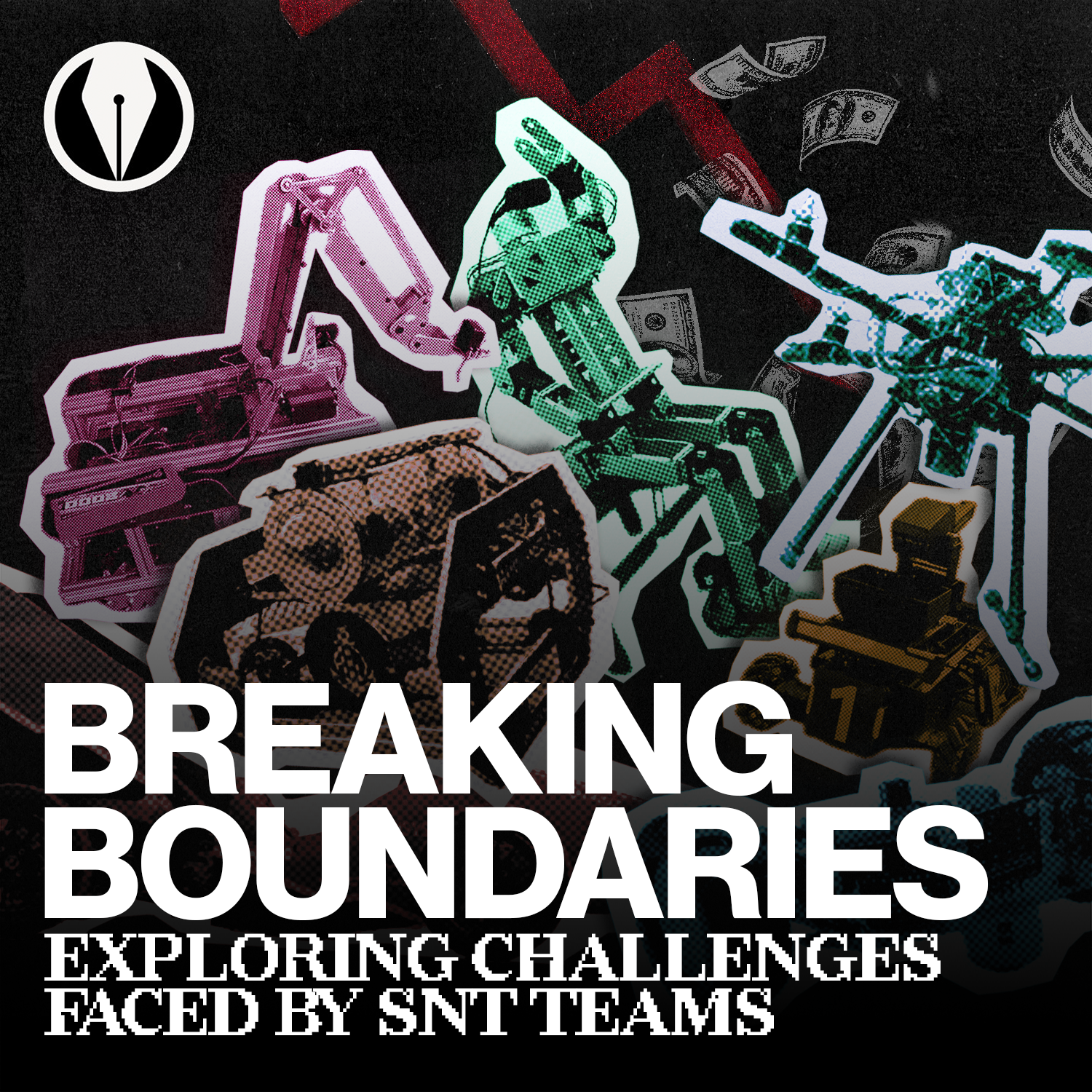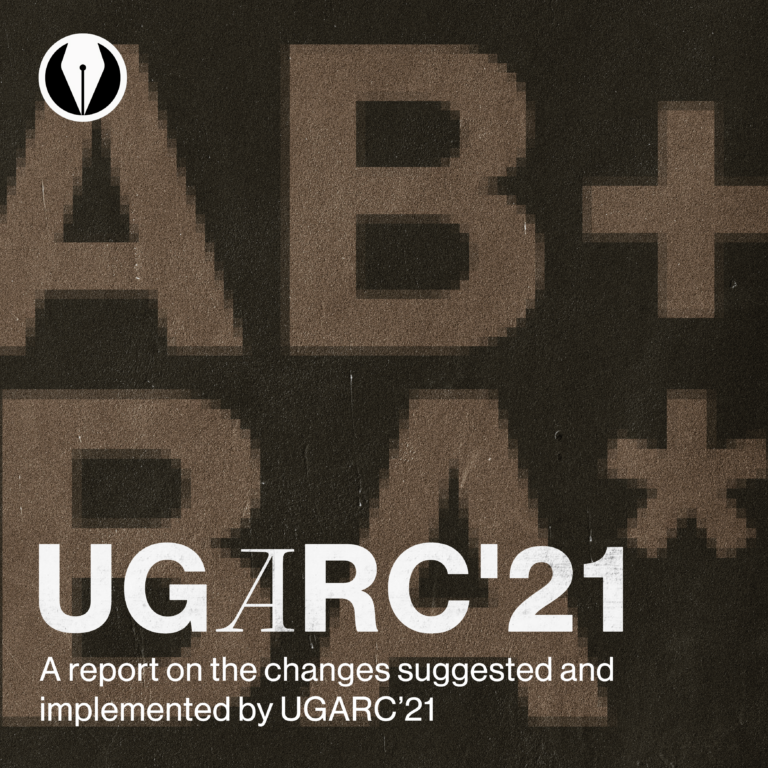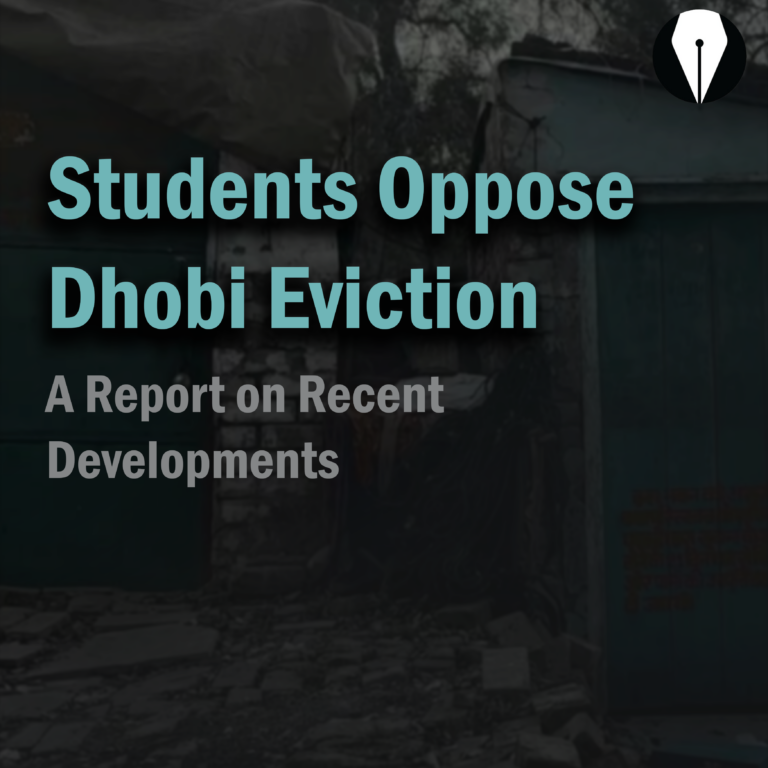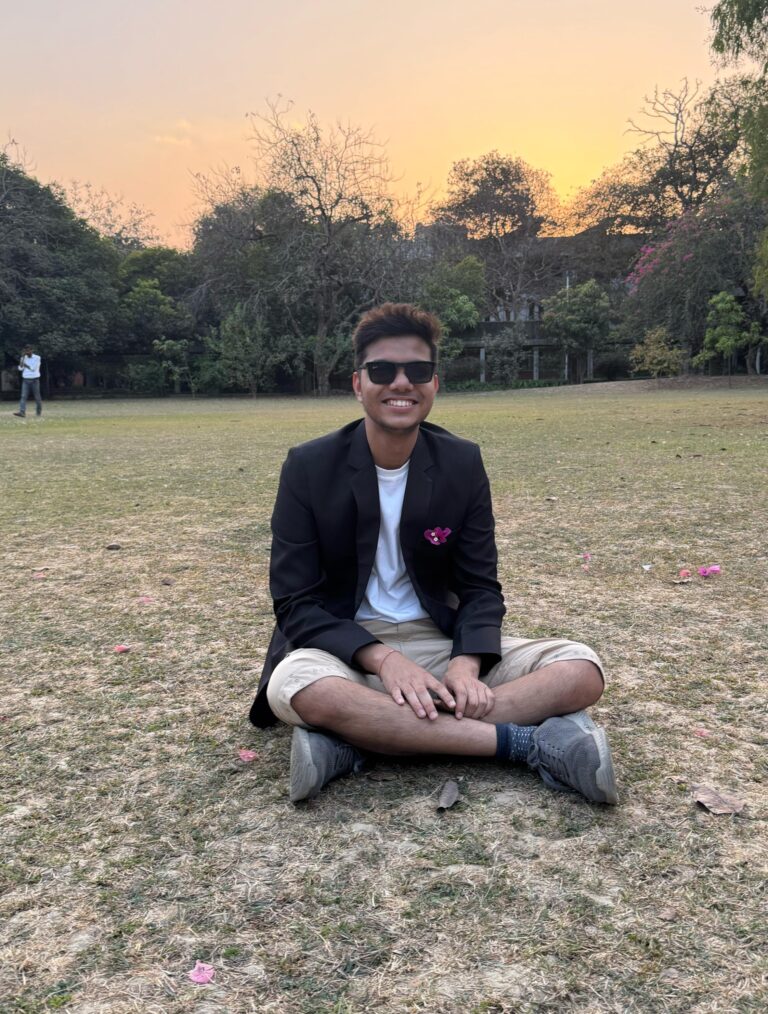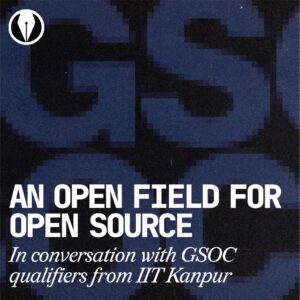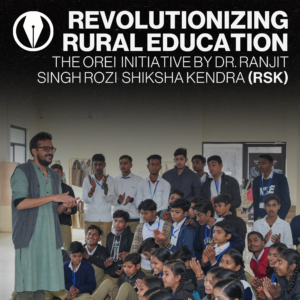Disclaimer: Vox Populi, IIT Kanpur, is the exclusive owner of the information on this website. No part of this content may be duplicated, paraphrased, or interpreted in any other way without written consent from Vox Populi. If you want to reproduce any of the content on this page, please contact our chief editors directly or reach out to us by email at voxpopuli@iitk.ac.in
The Science and Technology Institute Teams are student groups established to do research & development in different fields of science and technology. Their main goal is to represent our institution in various national and international science & technology competitions. From developing advanced indigenous robots aimed at winning competitions to collaborating with professors and publishing research papers, SnT teams form one of the most important student bodies that push the boundaries of innovation in science and technology.
In this piece, Vox delves into the intricacies of SnT teams’ funding, organisational structure, and workspace challenges faced by them. It highlights the disparities between current regulations and operational reality while also examining potential solutions and alternative models adopted by other IITs. To provide a well-rounded perspective, our investigation included consultations with the teams themselves, the core team members of the SnT council, administrative officials, faculty advisors, and teams from other IITs.
But What are Teams?
| Team | Description | Last few Competitions (except Inter-IIT) |
|---|---|---|
| Aerial Robotics | The team is working to provide autonomous UAV-based open-source solutions for real-life problems |
|
| Autonomous Underwater Vehicle | They design and manufacture underwater vehicles capable of navigating in unknown environments underwater |
|
| Equipe de Robotique Autonome (ERA) | The team is developing intelligent solutions for implementing autonomous robotics |
|
| Humanoid | The team is working towards the development of a fully functional autonomous humanoid robot, which closely mimics human beings |
|
| IITK Motorsports | They design, build, and race a high-performance racecar |
|
| Vision | The team is researching and building in the field of autonomous ground vehicles |
|
Teams from IIT Kanpur have the chance to showcase the institute’s engineering and technical excellence on both national and international platforms through various competitions. Competitions are an opportunity for these teams to show the world what students of IIT Kanpur are truly capable of.
Moreover, these teams actively contribute to academic research. According to Prof. Indranil Saha, Faculty Advisor for Team ERA and Team AUV, the experience gained by these teams in competitions enables them to contribute to externally funded research projects. The experimental setups created by the teams for testing their models become valuable resources for researchers, bridging the gap between undergraduate students and academic research. Additionally, working on competition problems exposes teams to practical applications of theoretical analysis, empowering them to enhance existing methods and address gaps, essentially contributing to systems research.
While SnT teams actively participate in various competitions, there’s untapped potential for securing more prizes in prestigious national and international events. We still have a long way to go to develop something of global recognition, such as an internationally acclaimed hyperloop by IITM. In a candid discussion with various SnT teams, Vox uncovered the aspirations, challenges, and recurring issues hindering their progress.
The Funding Issue
In October 2023, the teams secured a funding of 44 lakhs from the institute, following extensive efforts led by the SnT core team and the administration.
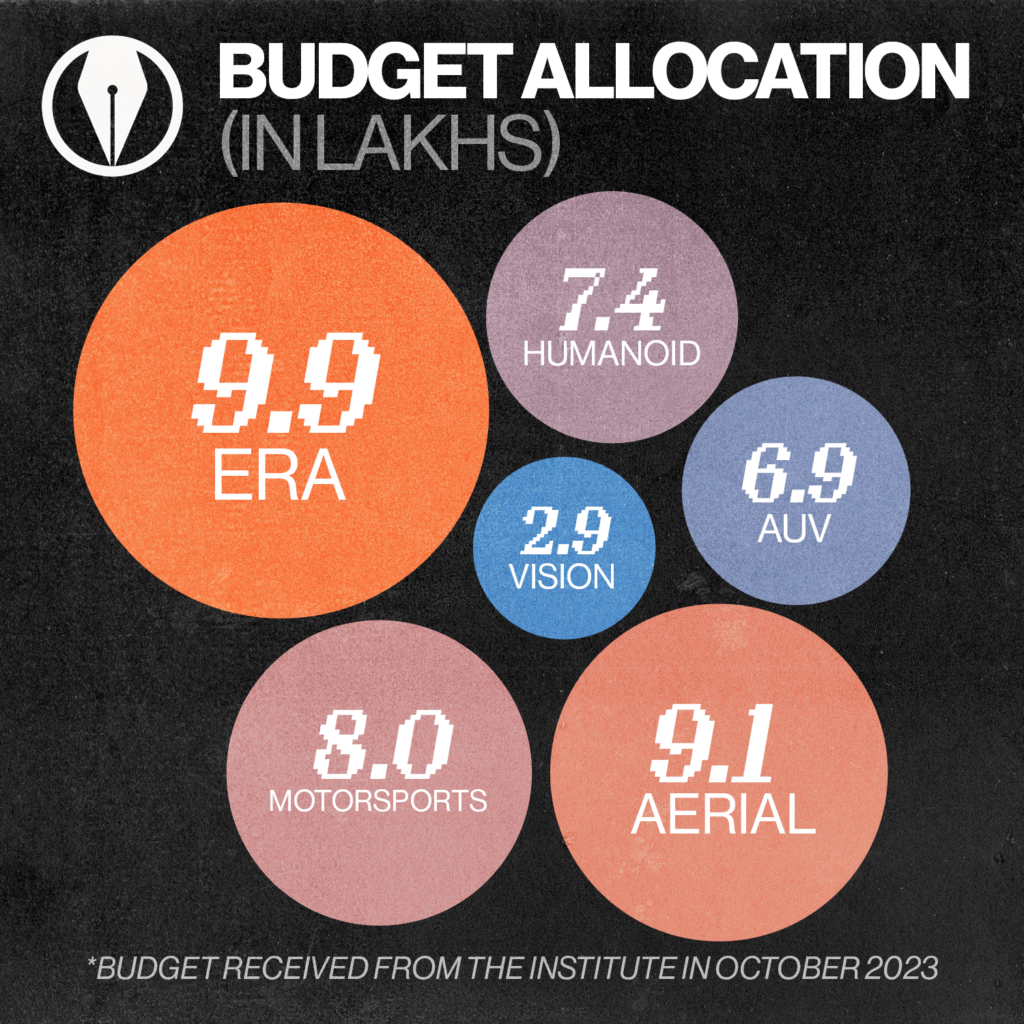
The last time teams received funding of such a magnitude from the institute was in 2018 when Prof. Abhay Karandikar started his tenure as a Director. A total seed fund of approximately 1.5 cr was given to all the teams combined. This funding was utilized to develop the initial set of prototype robots and cover the expenses associated with participating in international competitions. The 5-year gap in obtaining such a magnitude of funding hampered the productivity of teams immensely in the last 2-3 years.
However, it must be noted that in this period teams did receive funding from external sources through CSR and sponsorship deals. For example, in March 2023 teams received a combined funding of around 16 lakhs from a company called Noccarc but that was not enough for many.
This is what the teams said in their interviews-
“Teams lack long-term funding plans and rely on short-term bursts of income.”
“Limited funds restrict participation in competitions” – Atulya, Team Head, Aerial Robotics
“The team has existing functioning hardware but lacks funds to build new hardware and participate in competitions.”
– Kushal, ex-Team Head, AUV
“We had financial problems until October 2023. Although we have enough money now, it will only last for a few months. Hence, we are looking for another round of funding so that we can establish ourselves to get sponsorships” – Emaad, Team Head, ERA
“Insufficient funds have caused delays in the timeline for building the car.”
“Paperwork is difficult and time-consuming due to strict auditing rules and logistics.” – Anchit, Team Head, IITKMS
“Shortage of resources puts us at a disadvantage compared to other institutions that can freely build robots without hardware constraints. In contrast, we must operate within budget constraints, resulting in the need to build robots under limiting hardware conditions.” – Aadvik, Team Head, Humanoid
Although the problem of funding has been temporarily solved, the challenge lies in the absence of a continuous funding pipeline for the teams, as a 44 lakh grant from the institute might not be a recurring source.
The Current Funding Mandate
In the interviews, some team members pointed fingers at the SnT core team, contending that the council does not actively pursue funds for teams within the yearly gymkhana budget. This stands in contrast to the systematic yearly allocation of funds to clubs and societies, fostering a perception of discrimination towards the teams.
In response to these claims, Nishi Mehta, the Institute Secretary, Teams and Research of the SnT council, clarifies that their mandate doesn’t encompass funding teams. He explained that while clubs and societies, cater to the broader student community as open-to-all entities, teams operate differently. Teams are more focused and exclusive, with specific goals such as building robots or winning competitions and hence operating as closed groups. As clubs and societies cater to the broader student community, they are liable to receive the gymkhana funds obtained from students’ fees, but teams, being closed groups, are not.
According to him, the council is committed to providing support instead of directly funding them. Financing multiple teams becomes a challenge, especially when the requirements of a single team surpass the entire SnT council budget. For instance, the SnT council’s gymkhana budget for this term amounted to approximately 13 lakhs, whereas the proposed budget for Team ERA alone was around 18 lakhs.
The Constitution of the Students’ Gymkhana mentions this in Chapter V, Article 23, wherein it states –
“Teams shall be approved by the Senate on the recommendation of an Executive only if they have a validated source of funds. They shall not be allowed to use any funds from the Gymkhana.”
This clarifies that the responsibility for acquiring funds, managing logistics, and handling operations rests entirely on the teams, rather than on the council. This is further emphasized in the PoR handbook where it’s mentioned that teams are recommended to have non-technical heads of finance, marketing and media.
However, as an initiative, the SnT Council, in its past tenures, created a concept of “Council Projects”, through which teams could initiate projects with its team members, and the Council would provide a seed fund that teams could use to proceed with the projects they proposed, either partially or completely. The Council only limited the funds to projects and not the wider aim of the teams – to participate in competitions nationally or internationally. IITK Rocketry and Space Exploration Team (IITK-RaSET) is one such council project.
What does the Administration Think About Teams’ Funding?
To understand the administration’s perspective on funding for teams, we talked to the Dean of Resources & Alumni (DoRA), Prof. Kantesh Balani.
He explained to us that over the years, the extramural government grants have been reduced given that the older IITs have shown their capability to raise additional resources through CSR, projects, patents, and other alumni funding. The funding from the government is provided through loans for undertaking infrastructure projects like establishment of new laboratories and purchase of high-end research equipment, etc. To foster industry-academia collaboration, the government has launched a plethora of schemes with participation from the industry, with bridge funding by the government.
An inference from this shift in the economics of our institute is that while student bodies like SnT Teams can obtain some additional funding from the institute, teams must also focus on external sources from the industry.
However, the he told us that when a group of students come up with an idea to participate in a prestigious competition by working on cutting-edge technology, the institute can support from internal resources and/or solicit support from potential donors, which may assist them in developing the initial prototype.
He emphasized that it is important for a team to have a long-term and sustainable plan that ensures healthy progress towards competitions instead of a one-tenure annual plan. He believed that this long-term planning would create the possibility to get funding through fixed endowments from the institute’s donors. However, he also mentioned that short-term plans (any urgent need of funds, say to buy hardware or travel abroad) would require extra efforts. According to him, teams should market their progress to visitors, alumni, and external funding sources and look for sponsors, and be a synergistic factor in securing funds for the institute. The most probable sources of money would be through CSR, Alumni, and corporations looking to fund research in their interest areas.
According to him, it is imperative to recognize that securing funding is a vital aspect of running a team, complementing their engineering and research efforts. A collaborative effort is needed to secure funding, as the technical team possesses in-depth knowledge about the intricacies of their technical work and an effective program/proposal can be packaged by IITK Development Office to the right donors to support the cause.
Incoherence with the Legislature
“Teams shall not be a part of any other entity under the Gymkhana and shall be headed by one or more Captains appointed by the Senate.” – Chapter V, Article 24
This rule indicates that teams cannot be a part of the organizational structure of SnT council but instead are a separate entity in the Gymkhana. This is more clearly shown in the Appendix D of Constitution of the Students’ Gymkhana where teams are not mentioned under the SnT council and in the PoR handbook on pages 15 and 25 where teams are described separately.
However, there is an apparent contradiction between the legislative framework governing teams and observed reality. In the status quo, teams are considered as a part of the SnT council but according to the Student Gymkhana’s current legislature, they are not.
The support SnT council provides to teams is not well defined and varies from tenure to tenure. This raises questions on the identity of teams and points out the unclear association between the council and the teams which majorly seems to depend on the discretion of the governing SnT core team.
How other IITs do it differently
To understand possible alternative models, Vox contacted teams of other IITs from which teams of IITM and IITB responded.
Organizational Structure
Team Raftaar, IITM’s Motorsport team has a 3-tier structure, with fourth-year students forming a core team at the top. In our discussion with a senior team member of Raftaar, we learned that the core team does the job of raising funds and ensuring that the team has access to resources and connections to the industry.
We were told that while teams are supported financially by Center For Innovation to some extent (CFI is IITM’s parallel body to the SnT Council), it is not enough, and every team is expected to have their own finance and logistics verticals to source deals.
This is in contrast with our institute, where 4th year students don’t usually be a part of their teams and many of the teams do not extensively focus on finance & logistics.
During our conversation with a member of Team AeRoVe at IITB, we learned that technical teams do not have parent student body like Gymkhana or CFI. Instead, teams are associated with an institute body called Industrial Research and Consultancy Centre (IRCC).
Financial Support from Administration/Gymkhana
At IIT Madras, every team typically secure funding ranging from 4 to 7 lakhs per annum through the Gymkhana, facilitated by the Center for Innovation (CFI). Whereas at IIT Bombay, each team receives a funding of around 15 lakhs per annum through Industrial Research and Consultancy Centre (IRCC), IITB.
However, it’s noteworthy that teams at both institutions actively pursue additional funding from external sources. We were told that the IITB’s Racing team had a total corpus of ~5 Cr, while Team Agnirath at IITM, which was established in 2021, raised a funding of 1.5+ Cr.
Industry Connect.
A common factor that was mentioned in our interviews with teams’ heads was the relationships that teams have developed with companies through campus events and their alumni in associated sectors.
One team head mentioned that one of the ways that they garnered visibility and marketed themselves to big sponsors was to go to events and startups in the Research Park of IITM. For example, Team Agnirath, a team that creates solar cars, managed to tap Reliance as their main sponsor by connecting with them at an energy conference. Teams also take the help of their faculty advisors’ industry contacts to get their foot in the door.
Outreach
We were told that CFI has a dedicated managerial team spending its resources on maintaining outreach programs like Open House & Research Conclave, and regularly updated social media pages, giving a good public image to interested sponsors. Apart from marketing the teams’ work and building connections, these initiatives are beneficial in cases where donors are more willing to donate to institutional bodies than individual teams.
We asked Nishi, IS Teams & Research about the outreach of SnT council. He told us that although we have an Outreach and Connect Wing it is very inactive.
According to https://sntiitk.com/ , the mandate of the wing the following –
“Outreach & Connect Wing under SnT Council is responsible for building and sustaining Industrial, Research, and Alum collaborations of the council, gaining Projects and Sponsorships from them and passing them on to the Clubs/Teams/Hobby Groups under the Council, essentially being the centre of all the external affairs of the Council.”
Workspace
In the pursuit of innovation and problem-solving, teams often encounter a significant obstacle: the lack of adequate workspace. From managing inventory to collaborating effectively, the absence of a dedicated and permanent area proves to be a recurring obstacle for many.
Some teams like Aerial Robotics and AUV are have a designated room in the Halls of Residences. Team Motorsports has its workspace right next to MT and also works at the central workshop. Teams like Team ERA, Humanoid and Vision often work in the labs assigned to their faculty advisor or a temporary workspace that they get through similar recommendations on an ad-hoc basis.
“We currently have no workspace causing unnecessary delays and loss of productivity” – Team ERA
However, these arrangements, while functional, do not fully address the limitations concerning space for inventory, development and testing as multiple teams still face space issues. As a result, they do not adequately facilitate the collaborative and innovative atmosphere required for cutting-edge research and development.
One notable facility is the Sudha and Shankar Innovation Hub at IITM.
In this building, competition teams have a large spacious corridor on the ground floor where they can store their inventory, work on their projects and test their prototypes in a collective space.
There are labs where teams conduct in-house experiments – a 3D printing room and a server room that house one of the most powerful computing systems in their campus, second only to the main supercomputer at the computer center. These rooms assist in smooth conduction of high level simulations of the CFI teams.
The first floor is allotted to hardware clubs and is shared with Nirmaan, a pre-incubator. Nirmaan acts as a conduit between the GBM and IIT Madras Research Park incubation cell, and further guides these groups to materialize their ideas into successful businesses.
Here are some of the pictures –
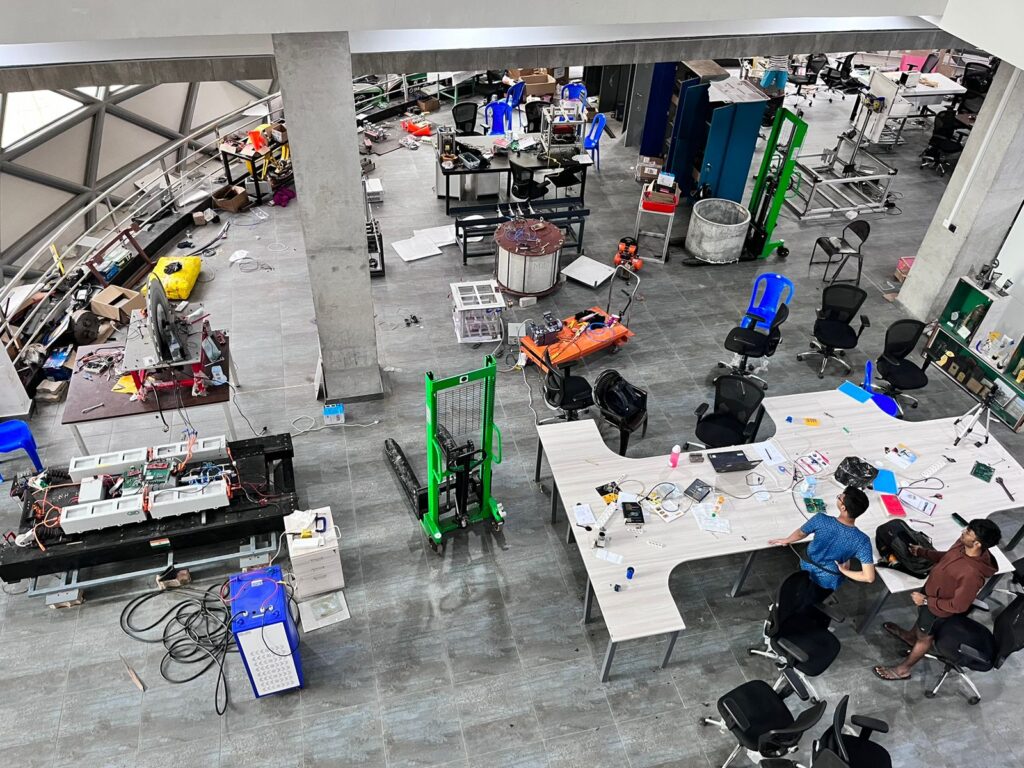
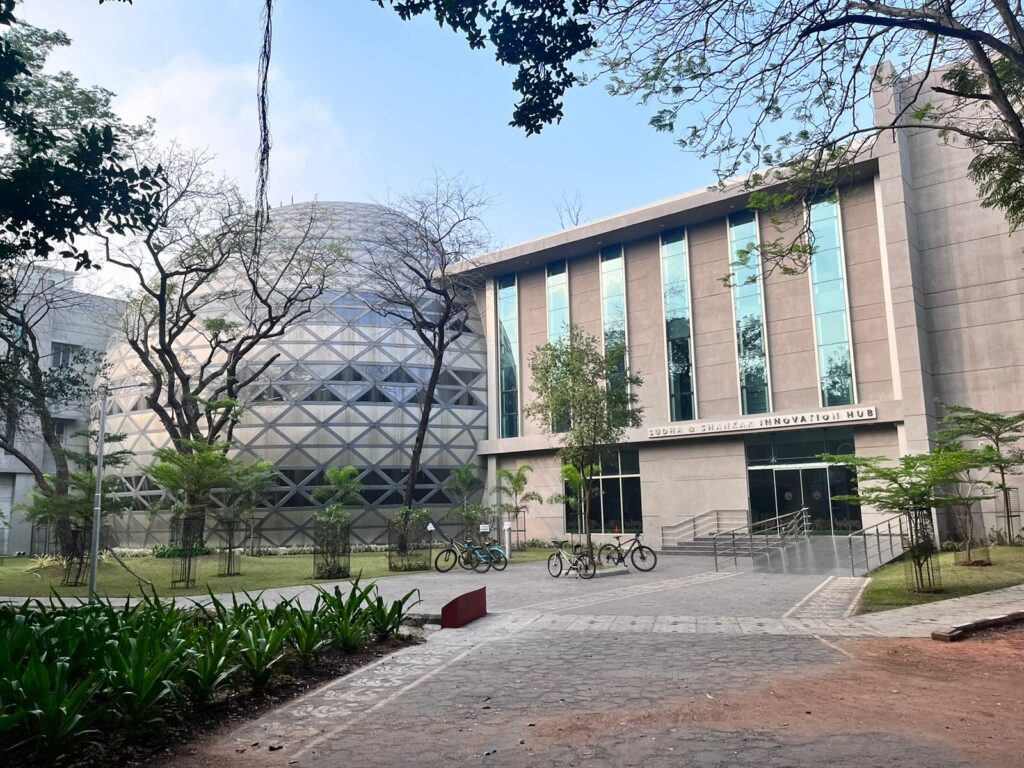
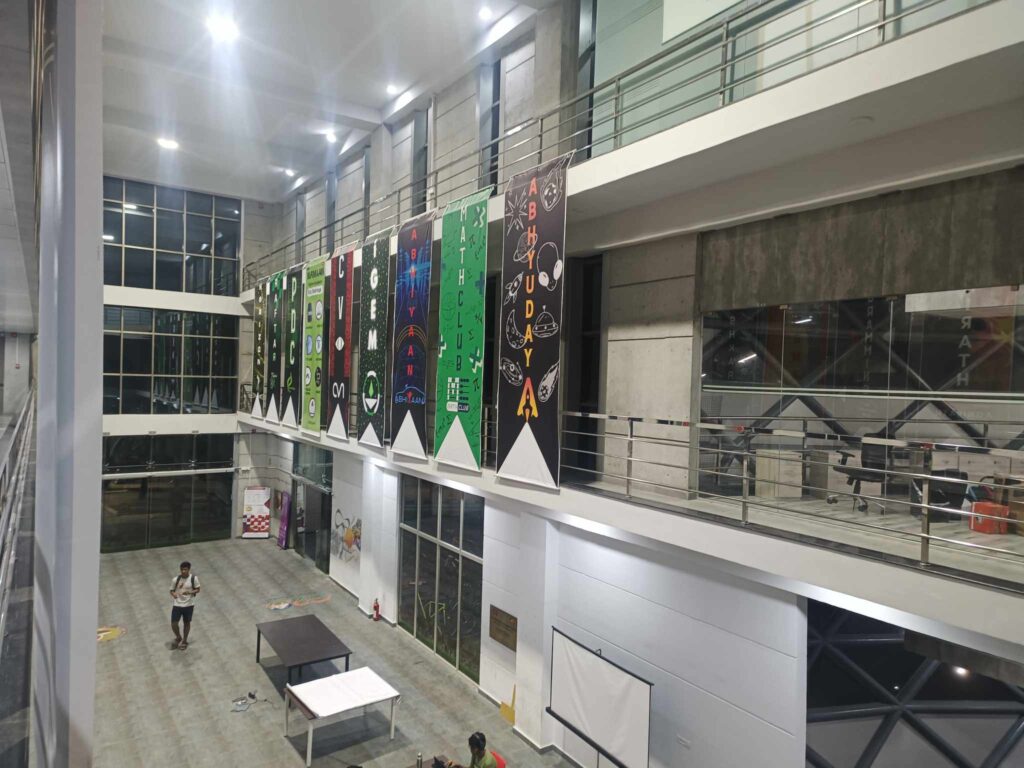
Currently on our campus, the Students’ Gymkhana has requested the administration to allocate permanent space for multiple clubs and teams in the Old-SAC building. An agreement has been reached with the administration. However, its implementation is still pending.
Conclusion
The challenges faced by IIT Kanpur’s SnT Institute Teams, from funding shortages to organizational ambiguities and workspace constraints, highlight the complexities of student-driven innovation. While recent funding efforts provide a temporary solution, a sustainable financial model remains elusive. Clearer organizational structures and proactive fundraising strategies, as seen in models from institutions like IIT Madras and IIT Bombay, offer valuable insights for improvement.
In navigating these challenges, collaboration and strategic planning are paramount. By leveraging industry connections, alumni support, and institutional resources, the teams can overcome obstacles and achieve greater success. Additionally, addressing workspace limitations is crucial for fostering an environment conducive to innovation and collaboration.
Despite the hurdles, the potential for growth and recognition on national and international stages is evident. With determination and collective effort, SnT Teams can realize their aspirations and continue pushing the boundaries of innovation in science and technology.
Edited by- Aarish Khan
Written by- Aditya V, Mahaarajan J, Manasvi N, Pranav Agarwal, Zehaan Naik
Design Credits- Atharv Jiwane, Sanyam Shivhare



